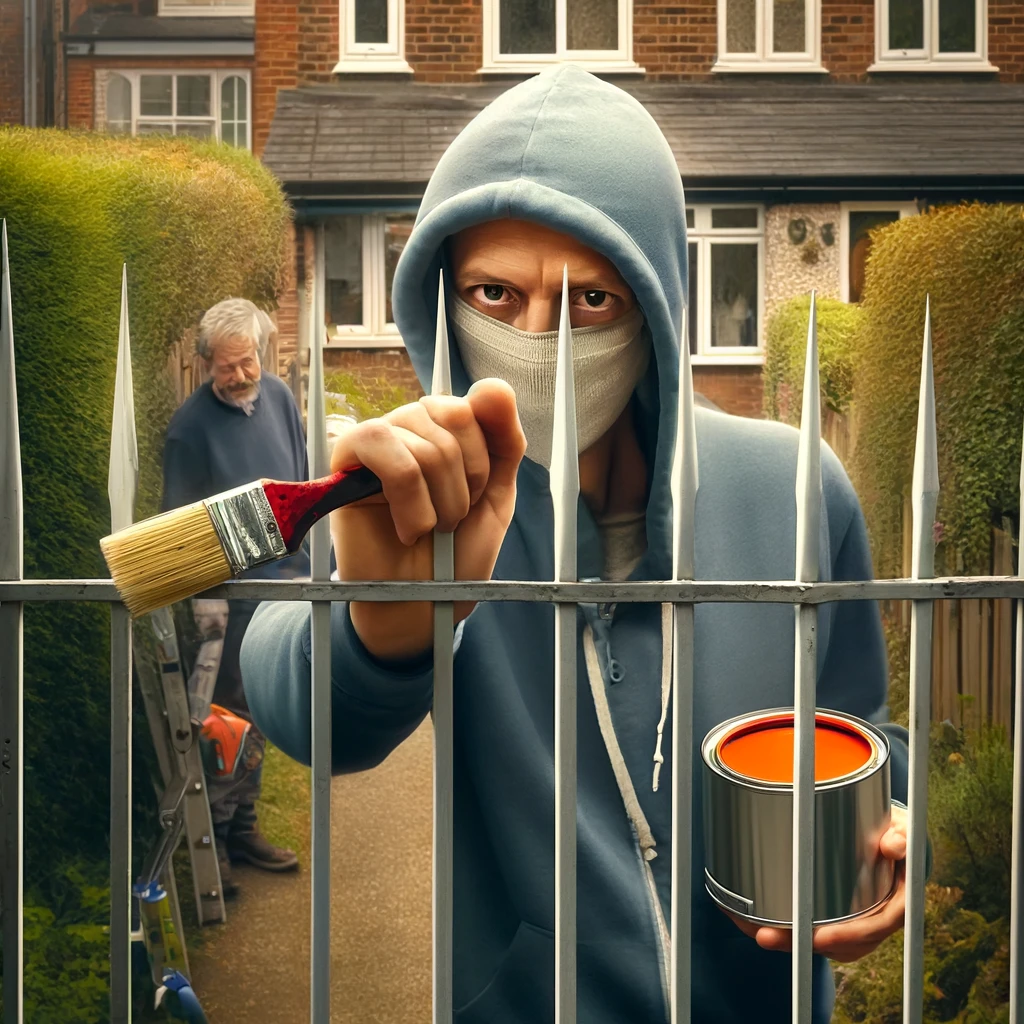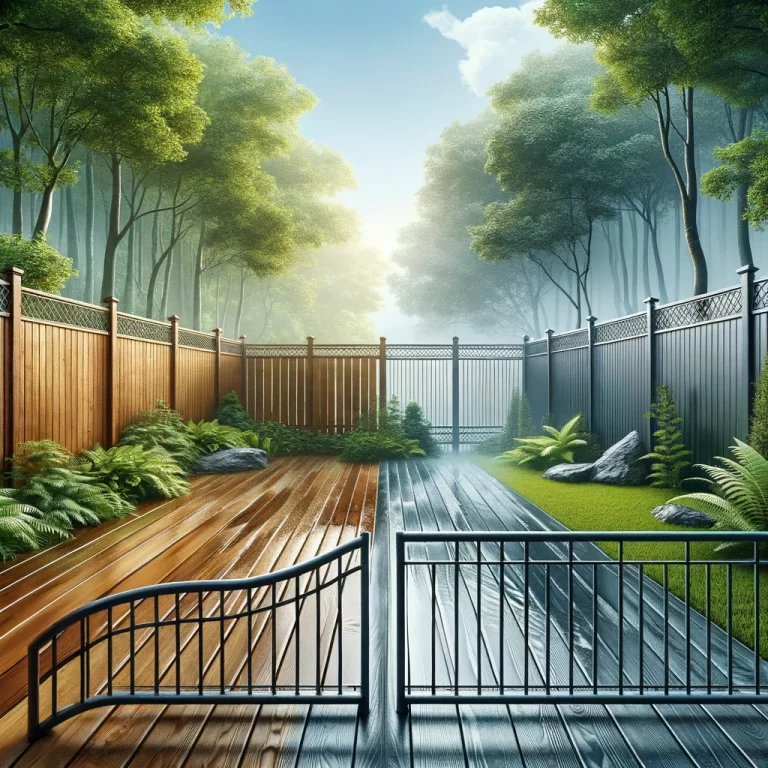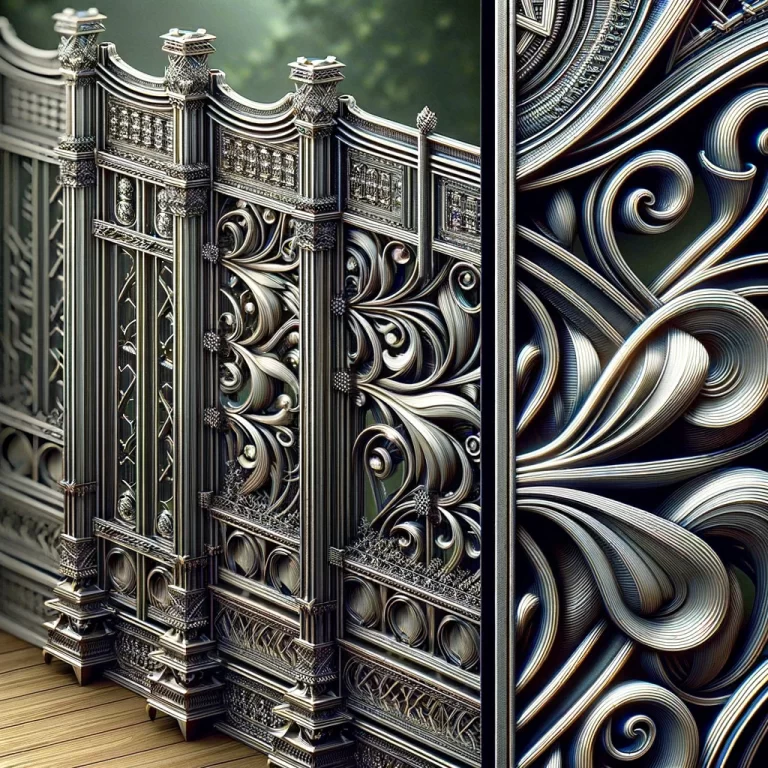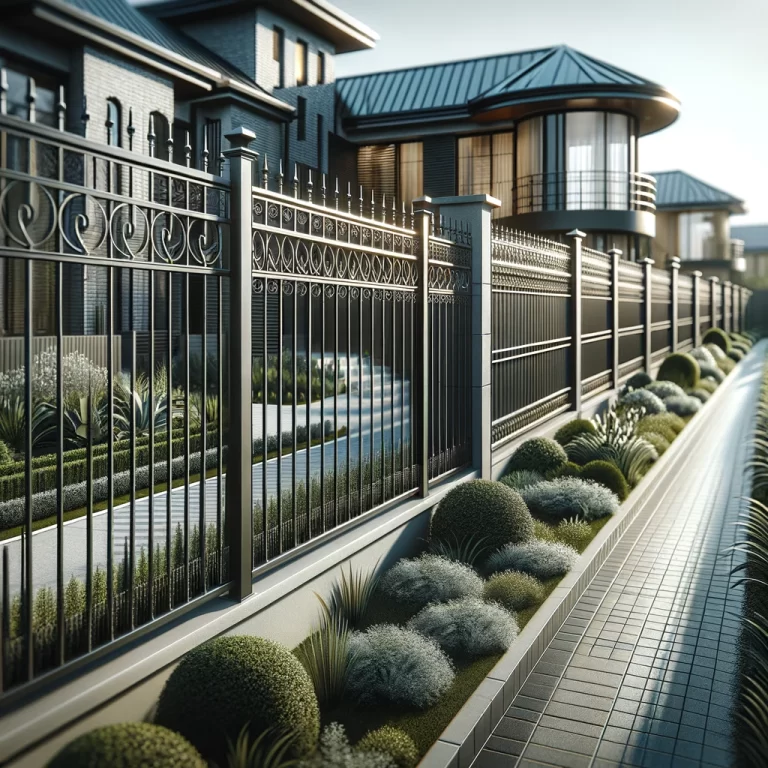Are you wondering how often you should paint your metal fence? Factors like climate, exposure to elements, quality of paint, and type of metal play a crucial role in determining the frequency of painting. In this article, we will explore the signs that indicate your metal fence needs a fresh coat of paint, the steps involved in painting a metal fence, and tips on how to maintain a newly painted fence. Let’s dive in and keep your metal fence looking its best!
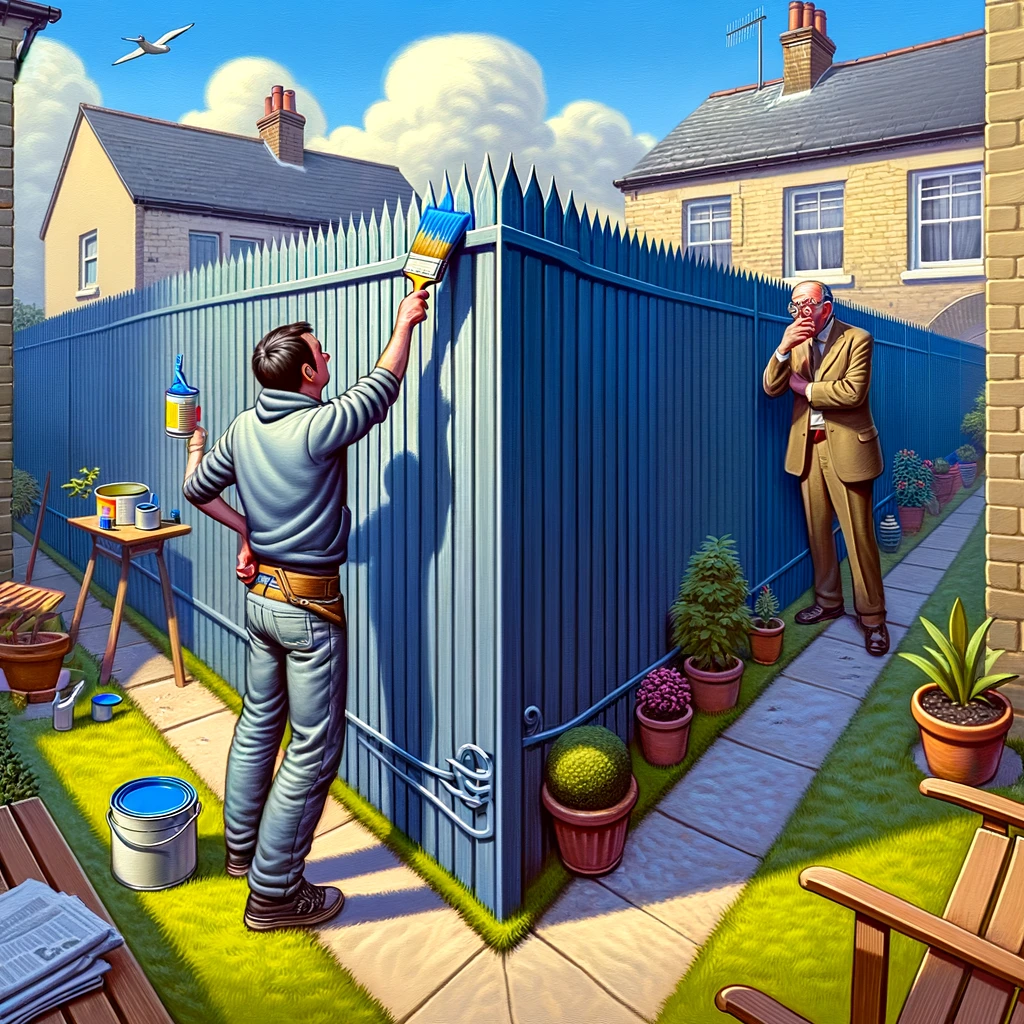
Why Should You Paint A Metal Fence?
Painting a metal fence is crucial for preserving its appearance and protecting it from rust and corrosion.
Enhancing the aesthetics of a metal fence through painting not only adds a splash of colour to the surroundings but also creates a coherent look that complements the overall property. Along with the visual appeal, painting acts as a barrier that shields the metal from moisture and other elements, preventing the formation of rust. This protective layer significantly extends the lifespan of the fence, saving homeowners from costly repairs or replacements in the long term.
What Factors Affect The Frequency Of Painting A Metal Fence?
Several factors influence how often you need to paint a metal fence, including the type of metal, exposure to elements, quality of paint, and climate conditions.
Metal composition plays a crucial role in determining the painting frequency. For instance, aluminium fences generally require less frequent painting compared to iron fences, as they are naturally resistant to rust and corrosion.
The exposure to elements such as sunlight, moisture, and pollution can accelerate the degradation of paint, necessitating more frequent touch-ups or repainting.
The quality of paint used is another critical factor. High-quality, durable paints can endure harsh conditions better, resulting in longer-lasting paint jobs and fewer repaints.
Additionally, climate variations like extreme temperatures, humidity levels, and seasonal changes can impact the paint’s integrity and durability, affecting the maintenance schedule of your metal fence.
Climate
Climate plays a vital role in determining how frequently a metal fence needs to be painted, with harsh weather conditions accelerating the deterioration process.
In regions with high humidity levels, such as coastal areas, metal fences are more prone to rust due to the moisture in the air. The constant exposure to moisture can weaken the protective coating, leading to quicker degradation of the fence.
Conversely, in arid climates, extreme heat and dryness can cause the paint on metal fences to crack and peel, leaving the metal vulnerable to corrosion.
- Temperature variations also play a significant role in the maintenance of metal fences. In areas with drastic temperature changes between seasons, the expansion and contraction of the metal can strain the paint layer, causing it to chip and flake off.
Exposure To Elements
The exposure of a metal fence to elements such as sun, rain, and snow significantly influences the frequency of painting, as these elements can accelerate corrosion and paint degradation.
Exposure to sunlight plays a crucial role in breaking down the protective layers of paint on the metal surface, leading to rust formation. When moisture from rain or snow interacts with the metal, it creates a breeding ground for rust, further compromising the fence’s structural integrity.
Pollutants in the air can react with the metal, speeding up corrosive processes and making the metal more susceptible to degradation. Variations in climate, from extreme heat to cold winters, can also expand and contract the metal, causing cracks in the paint that expose the metal to further damage.
Quality Of Paint
Using high-quality paint is essential for ensuring the longevity of a metal fence’s protective coating and preserving its visual appeal over time.
Regarding maintaining a metal fence, the paint serves as the first line of defence against environmental elements such as rain, sun exposure and rust-causing agents. Selecting a premium-quality paint can significantly increase the fence’s durability and resistance to corrosion, thereby enhancing its lifespan. Opting for paints specifically formulated for metal surfaces ensures better adherence and protection, creating a barrier that shields the underlying material from moisture, UV rays, and oxidation. Investing in superior paint products pays off in the long run, saving you from the hassle and costs of premature fence deterioration.
Type Of Metal
Different metals like iron, aluminium, and steel have varying susceptibility to rust and corrosion, influencing the painting frequency needed for optimal maintenance.
Iron fences, for instance, are known for their classic aesthetic but require regular upkeep to prevent rust formation. Periodic inspections and touch-ups with a specialised rust-proofing paint can help maintain their elegance and durability.
On the other hand, aluminium fences are naturally rust-resistant, making them a low-maintenance option ideal for humid climates. Steel, while durable, may need a protective coating to shield it from moisture and rust.
Exploring the specific care routines for each metal type can enhance the longevity and appearance of your fence.
How often should you paint a metal fence?
The frequency of painting a metal fence varies based on climate and exposure levels, with guidelines ranging from annual touch-ups to complete repaints every few years.
In mild climates with low exposure to harsh elements, a light touch-up every 1-2 years can suffice to maintain the fence’s appearance and protection.
For moderate climate zones where the fence faces occasional moisture and sunlight, consider a repaint every 3-4 years to prevent corrosion and fading.
In harsh environments with high humidity or extreme temperatures, a thorough repaint every 2-3 years is recommended to ensure the metal is adequately shielded from the elements.
Mild Climate And Low Exposure To Elements
In mild climates with minimal exposure to harsh elements, a metal fence may require repainting every 3-5 years to maintain its protective finish.
Regular inspections play a crucial role in identifying early signs of wear and corrosion on the metal surface. By checking for rust spots, chipped paint, or areas of fading, homeowners can address these issues promptly before they escalate. Touch-ups should be done promptly by cleaning the surface, sanding down any rough spots, applying primer if needed, and then carefully painting over the damaged areas with a matching colour.
Establishing a consistent maintenance routine for the metal fence can significantly extend its lifespan. This routine should involve cleaning the fence with a mild detergent and water, removing any debris or dirt buildup, and rinsing thoroughly. Applying a protective coating or sealant after repainting can provide an extra layer of defence against moisture and UV rays.
Moderate Climate And Moderate Exposure To Elements
In moderate climates with average exposure to elements, repainting a metal fence every 2-3 years can help maintain its protective layer and visual appeal.
It’s crucial to consider the impact of seasonal changes and humidity levels on the durability of the paint and the overall condition of the fence. During winter months when humidity levels fluctuate and temperatures drop, the metal surface is more prone to corrosion and rust.
Conversely, summer brings stronger UV rays and higher temperatures, which can cause the paint to fade and peel more quickly. To combat these challenges, it may be wise to check the fence’s condition at least once a year for any signs of wear and damage, to determine if an earlier repainting is necessary.
Harsh Climate And High Exposure To Elements
In harsh climates with high exposure to elements like seawater or extreme temperatures, a metal fence may need repainting every 1-2 years to combat accelerated corrosion. Severe weather conditions, such as relentless UV rays and heavy rainfall, can quicken the onset of rust, requiring proactive maintenance measures to prolong the fence’s lifespan.
The impact of seawater exposure cannot be underestimated, as it significantly contributes to metal degradation. Applying a high-quality, rust-resistant primer before painting can provide essential protection against these corrosive factors.
The choice of paint is crucial in combating the challenges posed by harsh environments. Opt for a durable, weather-resistant paint specifically formulated for metal surfaces. Keep an eye out for signs of peeling or chipping paint, as these are indicators that the fence may need repainting sooner than expected.
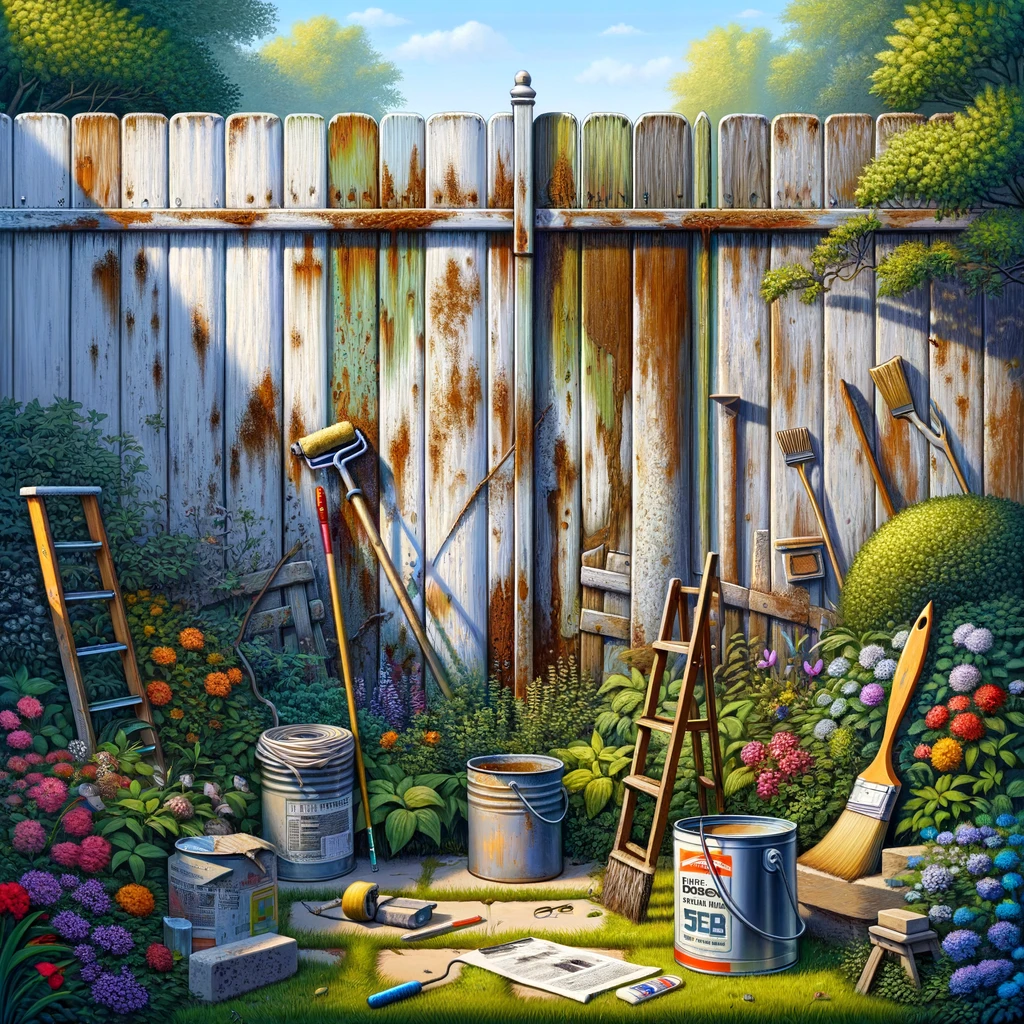
What Are The Signs That A Metal Fence Needs To Be Painted?
Recognising signs such as rust spots, chipping or peeling paint, and fading colour indicates that a metal fence requires immediate repainting to prevent further corrosion and maintain its structural integrity.
If you notice any bubbling or blistering in the paint, it could be a clear sign of underlying rust eating away at the metal surface. A rough texture on the fence also signifies paint deterioration, making it vulnerable to rust formation. In addition, a significant change in the colour of the fence may not only affect its aesthetics but also indicate that the protective paint layer is wearing off. It is crucial to address these issues promptly to ensure the longevity of your metal fence and avoid costly repairs in the future.
Rust Spots
The presence of rust spots on a metal fence serves as a clear warning sign that immediate repainting is necessary to prevent further corrosion and structural damage.
Rust spots are not merely aesthetic blemishes; they indicate a deeper issue plaguing the metal. When metal is exposed to oxygen and moisture, a chemical reaction occurs, leading to the formation of rust. This process, known as corrosion, weakens the metal over time, compromising its strength and durability. To combat this degradation, preventive measures are crucial.
Regular maintenance, such as cleaning and applying protective coatings, can shield the metal from environmental factors that trigger rust formation. If rust spots have already appeared, proper surface preparation, including sanding and priming, is essential before applying a high-quality paint to restore the fence’s integrity.
Chipping Or Peeling Paint
Chipping or peeling paint on a metal fence exposes the underlying surface to rust and corrosion, necessitating prompt repainting to restore the protective barrier.
When the paint starts to chip or peel, it’s not just a cosmetic issue – it opens the door for rust to take hold. Once rust forms, it can spread quickly, compromising the structural integrity of the fence. Over time, this corrosion weakens the metal, leading to potential safety hazards and an overall shorter lifespan of the fence.
Timely maintenance is crucial to prevent these detrimental effects. By repainting the fence at the first signs of chipping, you can halt the progression of corrosion, saving both time and money in the long run.
Fading Color
Fading colour on a metal fence not only detracts from its visual appeal but also indicates a loss of protective coating, necessitating a fresh coat of paint to enhance durability and aesthetics.
When colour fades on a metal fence, it exposes the underlying material to harsh elements like UV rays and moisture, leading to potential rust and corrosion issues. The aesthetic value of the fence diminishes significantly, affecting the overall beauty of the property. The protective properties of the original coating diminish, leaving the metal vulnerable to accelerated wear and tear.
UV protection is compromised, increasing the risk of damage and reducing the lifespan of the fence. It becomes imperative to address these issues promptly by repainting the fence in a timely manner.
What Are The Steps To Painting A Metal Fence?
Painting a metal fence involves several essential steps such as preparing the surface, selecting the right paint and primer, applying multiple coats, and adding a protective finish.
Before you begin painting the metal fence, it’s crucial to ensure that the surface is clean and free from rust, dirt, and old paint. This can be achieved by using a wire brush or sandpaper to remove any flaking paint and rust spots. Once the surface is smooth, wipe it down with a cloth dampened with white spirit to further clean it.
Regarding selecting the paint, opt for a high-quality outdoor metal paint that is corrosion-resistant and designed for exterior use. Consider the colour you want, as some paints offer a range of options to match your aesthetic preferences.
Priming the metal surface is vital to ensure proper adhesion and durability of the paint. Use a metal primer that is compatible with the type of paint you’ve chosen. Apply a thin, even coat of primer and allow it to dry completely before proceeding with the paint application.
Apply the metal paint in smooth, even strokes, overlapping each pass slightly to ensure full coverage. Depending on the paint manufacturer’s instructions, you may need to apply multiple coats for the best results. Allow each coat to dry thoroughly before applying the next one.
Once you’ve achieved the desired paint coverage, you can add a protective finish to enhance the durability of the paint job. Consider using a clear varnish or a weatherproof sealant to protect the paint from fading, chipping, and UV damage. Follow the manufacturer’s instructions on applying the protective finish for optimal results.
Preparing The Fence
Properly preparing a metal fence before painting is crucial and involves steps like cleaning the surface, removing rust, and applying a suitable primer to enhance paint adhesion.
Before starting the painting process, start by thoroughly cleaning the metal fence to remove any dirt, grime, or loose paint. A pressure washer or a simple solution of soap and water can be used for this purpose. Once the surface is clean, inspect for any signs of rust. In case of rust spots, employ rust removal techniques such as wire brushing, sanding, or using a chemical rust remover for effective results.
After addressing any rust, consider applying a rust converter to convert any remaining rust into a stable surface that can be painted over. These converters typically contain chemicals that interact with the rust, forming a protective layer.
Choosing The Right Paint
Selecting the appropriate paint for a metal fence involves considerations such as weather resistance, colour match, durability, and compatibility with the metal grade, ensuring long-lasting protection and visual appeal.
- When looking for weather-resistant paints, opt for ones specifically designed for exterior metal surfaces to shield against harsh elements like UV rays and moisture.
- Consider the aesthetic aspect by choosing paint colours that complement the surroundings or highlight architectural details.
- For enhanced durability, prioritise paints with added protective layers or anti-corrosive properties to prevent rust formation.
- It’s crucial to select paint formulations that adhere well to metal surfaces and offer high adhesion to prevent peeling or chipping over time.
- Assess the metal type of the fence to ensure compatibility with the selected paint for optimal adhesion and longevity.
Applying The Paint
Applying paint to a metal fence requires precision and care, involving techniques like brushing, rolling, or spraying to achieve even coverage and a smooth finish.
When starting this process, it is crucial to prepare the surface properly by cleaning off any rust, dirt, or peeling paint using a wire brush or sandpaper. Priming the fence with a rust-inhibiting primer is recommended, especially for outdoor applications.
Once the surface is prepped, using a high-quality metal paint, apply the first coat in even strokes, following the natural lines of the fence. Allow this coat to dry completely before applying a second coat to ensure a durable and long-lasting finish.
Finishing Touches
Completing the painting process for a metal fence includes final touches like applying a top coat, inspecting for any missed spots, and adding a metal-grade wax or sealant for added protection.
After the primary layers of paint have been applied and allowed to dry adequately, the final stage of painting a metal fence involves focusing on the finishing touches to ensure longevity and visual appeal. Applying a top coat is crucial to add an extra layer of protection against environmental factors and to enhance the overall finish. Once the top coat is evenly distributed, conducting a thorough quality inspection to identify and correct any missed spots or imperfections is essential for a flawless final result.
Adding a metal-grade wax or sealant serves as a protective barrier against rust and corrosion, significantly extending the lifespan of the fence. This step is particularly crucial for outdoor metal structures exposed to varying weather conditions.
How To Maintain A Newly Painted Metal Fence?
Maintaining a newly painted metal fence involves regular cleaning, touching up any damage, inspecting for rust, and planning for periodic repaints every few years.
To keep the appearance of your metal fence in top condition, start by routinely dusting or hosing down the surface to remove dirt and grime. Use a mild soap solution and a soft bristle brush to scrub away any stubborn stains. Make sure to address any chipped or scratched areas promptly by applying a touch-up coat of paint to prevent further corrosion.
Regularly inspect the fence for signs of rust formation, especially at joints and welds. If you notice any rust spots, use a wire brush to remove the rust, then apply a rust converter or primer to prevent its spread. Consider applying a rust-inhibiting paint or clear sealant as an additional protective measure.
Plan to repaint the metal fence every 3-5 years to maintain its appearance and durability. Before repainting, thoroughly clean the surface, sand any rough areas, and apply a coat of metal primer. Choose a high-quality exterior metal paint that is suitable for your local climate conditions for long-lasting results.
Regular Cleaning
Regularly cleaning a newly painted metal fence with gentle detergent and water helps prevent dirt build-up, maintains its shine, and extends the lifespan of the paint finish.
Proper cleaning techniques are essential to ensure the longevity and aesthetics of a metal fence. When cleaning, use a soft brush or cloth to gently scrub the surface, avoiding abrasive materials that could scratch the paint. Additionally, avoid strong chemicals and abrasive cleaners that may strip the paint or damage the metal.
Choosing the right cleaning agent is crucial. Opt for gentle soapy water or a specialised metal cleaner that is safe for painted surfaces. Regular cleaning, ideally every 3-6 months depending on the environment, is recommended to prevent corrosion and maintain the fence’s appearance.
Touching Up Any Damage
Promptly addressing any paint chips or scratches on a newly painted metal fence by touching up with matching paint prevents rust formation and maintains the fence’s protective layer.
Paint damage, if left unattended, can lead to wider deterioration, compromising the integrity of the fence. To effectively touch up minor imperfections, start by cleaning the affected area with soap and water, allowing it to dry completely. Use a small brush or dabber to apply the matching paint in thin layers, ensuring that each coat blends seamlessly with the existing colour.
For more extensive damage, consider paint blending techniques to achieve a uniform finish. This involves feathering the edges of the new paint into the old paint, gradually building up layers until the transition is invisible to the eye. Investing in a quality paint that matches the fence’s colour and type is crucial for lasting results and protection.
Inspección de óxido
Regularly inspecting a newly painted metal fence for signs of rust or corrosion allows for early detection and treatment, preventing extensive damage to the fence structure.
One effective way to detect rust on a metal fence is by closely examining areas prone to moisture accumulation, such as joints, crevices, and areas where the paint has chipped away.
If you notice any bubbling or flaking of paint, it could indicate the presence of rust underneath, requiring immediate attention.
Regarding removing rust from a metal fence, using a wire brush or sandpaper to scrape off the rust and applying a rust converter can help halt the corrosion process.
To prevent rust from reoccurring, consider applying a fresh coat of rust-inhibiting paint or sealant to the fence regularly, especially after cleaning and removing any existing rust.
Repainting Every Few Years
Scheduled repainting of a metal fence every few years helps maintain its protective coating, preserves its visual appeal, and ensures long-term resistance against rust and corrosion.
By adhering to a regular repainting schedule, metal fences can be safeguarded from environmental factors that can lead to deterioration. Proper intervals for repainting typically range from every three to five years, depending on the climate and exposure to elements. Before the painting process begins, it is crucial to prepare the surface by cleaning off dirt, rust, and any flaking paint. Applying a rust-inhibiting primer can further enhance the adhesion and longevity of the new paint coat.
Regarding painting, choosing a high-quality paint specifically formulated for metal surfaces is essential. Applying thin, even coats and allowing ample drying time between each application can result in a smoother finish and better protection. Investing in paint products with UV protection can help prevent fading and keep the fence looking vibrant for longer durations.

